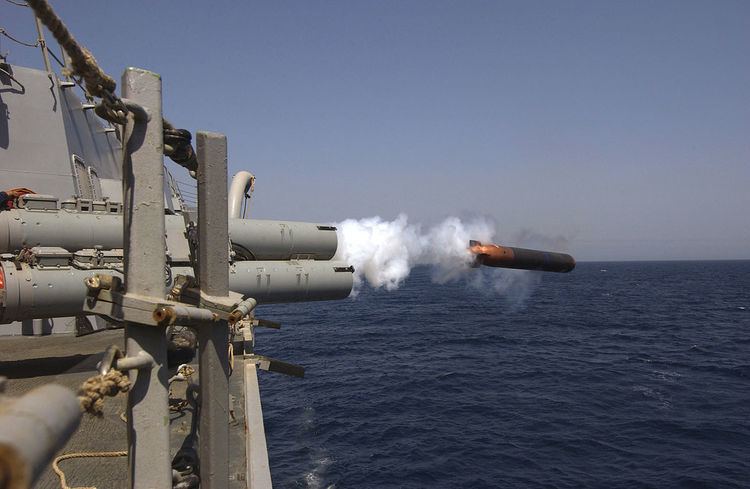Type Torpedo Used by United States Navy Designed 1974 | Place of origin United States | |
 | ||
The Mark 50 torpedo is a U.S. Navy advanced lightweight torpedo for use against fast, deep-diving submarines. The Mk 50 can be launched from all anti-submarine aircraft and from torpedo tubes aboard surface combatant ships. The Mk 50 was intended to replace the Mk 46 as the fleet's lightweight torpedo. Instead the Mark 46 will be replaced with the Mark 54 LHT.
Contents
The torpedo's stored chemical energy propulsion system uses a small tank of sulfur hexafluoride gas, which is sprayed over a block of solid lithium, which generates enormous quantities of heat, which generates steam. The steam propels the torpedo in a closed Rankine cycle, supplying power to a pump-jet. This propulsion system offers the very important deep-water performance advantage in that the combustion products—sulfur and lithium fluoride—occupy less volume than the reactants, so the torpedo does not have to force these out against increasing water pressure as it approaches a deep-diving submarine.
